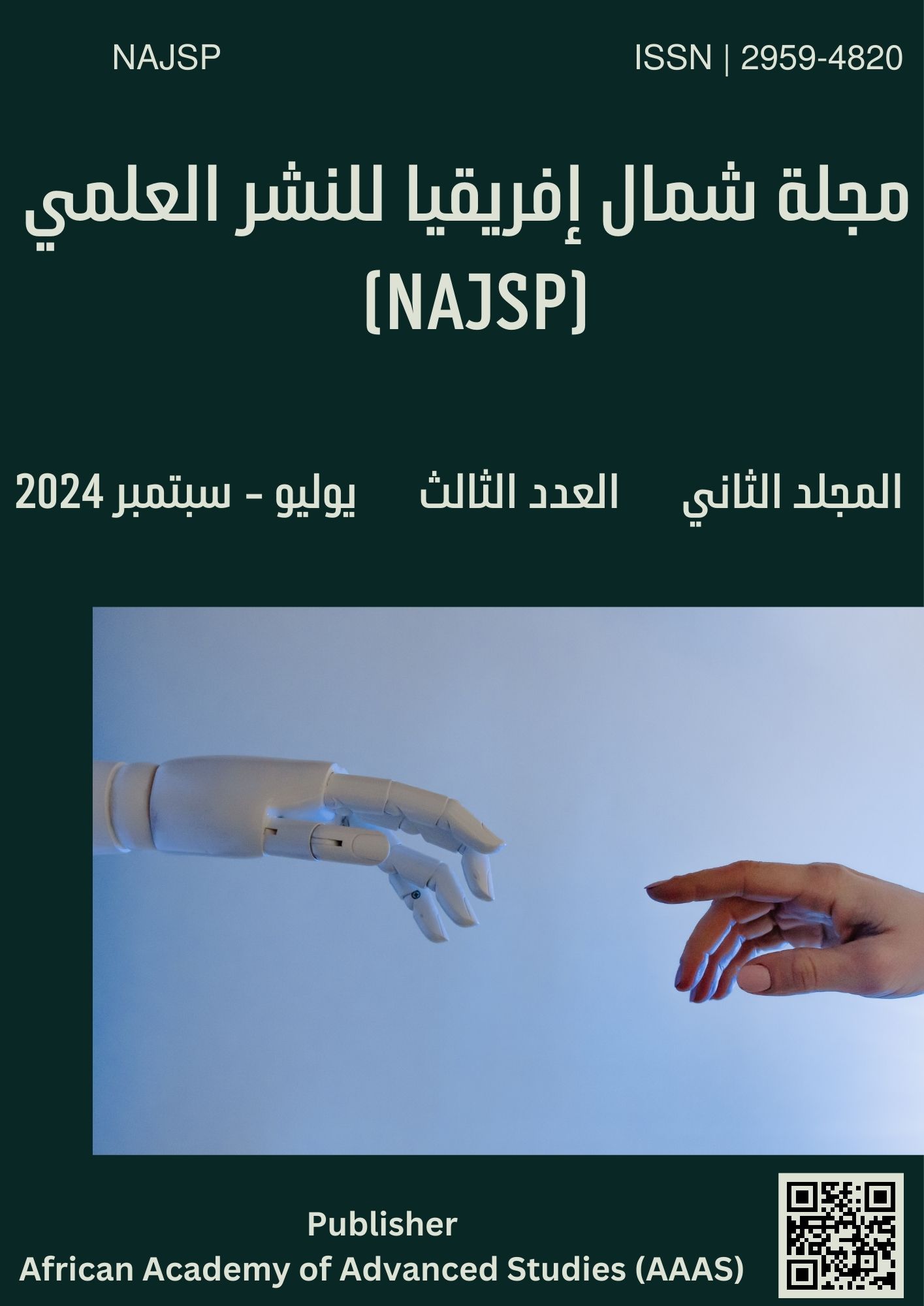Automatic Libyan Vehicles Plate Recognition Based on K-Nearest Neighbor (KNN)
DOI:
https://doi.org/10.65414/najsp.v2i3.201الكلمات المفتاحية:
License Plate Recognition, Edge-Detection, K-Nearest Neighbor, Template Matching, Plate region extraction, Segmentation, Morphology, smearingالملخص
There are numerous uses for license plate recognition and identification (LPR/I) in traffic systems, including border and customs checkpoints, red light enforcement, and highway electronic toll collection. It has been widely utilized in port, airport gate surveillance, highway and bridge charges and All of that drives our efforts to develop an effective LPR/I system tailored for Libyan license plate recognition. Using the current, legally needed license plate, automated license plate reading is a very practical and helpful method. This paper discusses the use of computer vision for real-time license plate recognition and vehicle detection. For detection and recognition, respectively, the primary focus will be on integrating vertical edge matching with k-nearest neighbor. Additionally, to effectively localize, regions must be further enhanced by removing non-text regions while keeping candidate text regions. However, morphology is necessary to distinguish some combined features. And that is a decent, logical system with k-nearest to recognize the character based on it. The two main components of the suggested method are the extraction of the plate region, segmentation of the characters and digits, and KNN-based plate character identification. In this work text categorization involves two processes: the training process and classification process Initially, the system is trained to comprehend the appearance of each category using a set of documents that have already been categorized. Second, the classifier classifies newly received documents by using the training 'model'. By using training documents with known categories, the K-Nearest neighbor classification approach locates the new sample document's closest neighbor among all of them. The new document category can be found thanks to these neighbors. Statistical template matching is used for the recognition of plate characters. On actual photos, the suggested algorithm's performance has been evaluated. We observed that our system performs better in car license plate recognition based on the trial findings while testing, and we obtained a strong result. The suggested technique verified which extraction rates are high by using different vertical edge matching with the k-nearest natural images.
التنزيلات
منشور
كيفية الاقتباس
إصدار
القسم
الرخصة
الحقوق الفكرية (c) 2024 Nouri Ali, Suleiman Omar, Iman Namroud, Mohsen Ibrahim

هذا العمل مرخص بموجب Creative Commons Attribution 4.0 International License.







